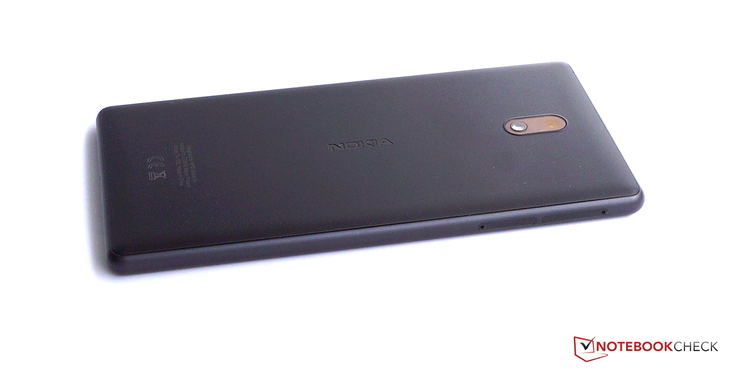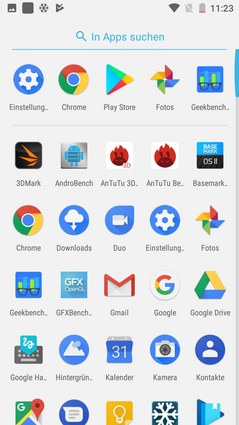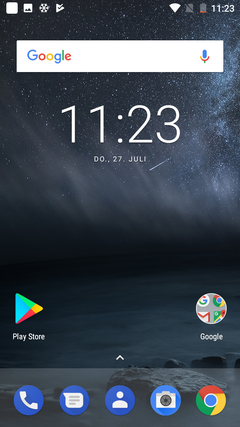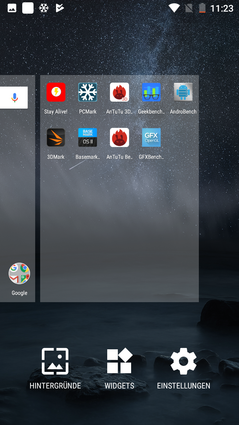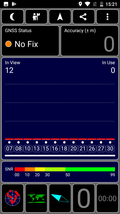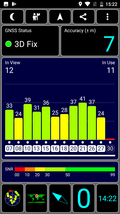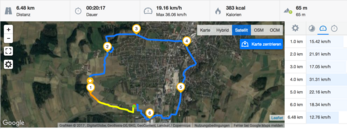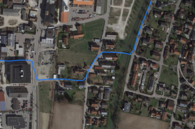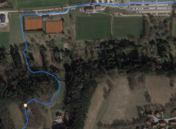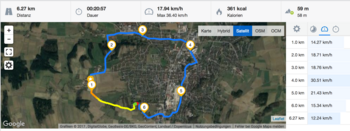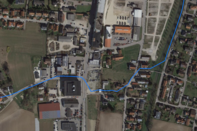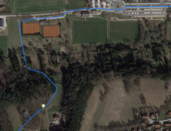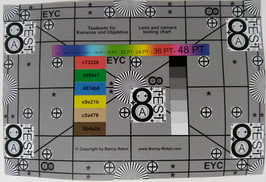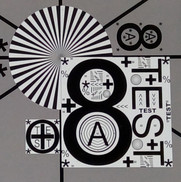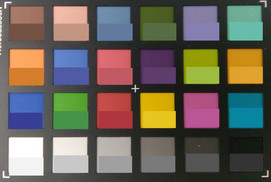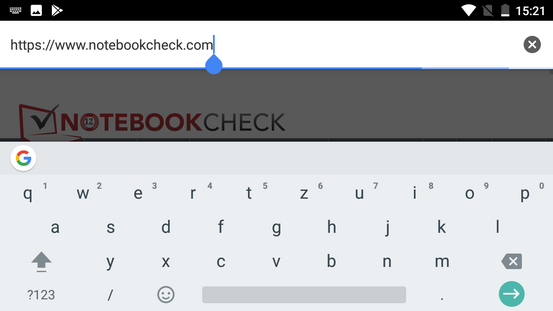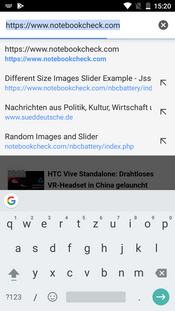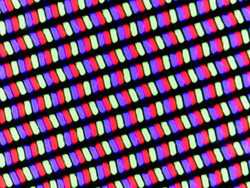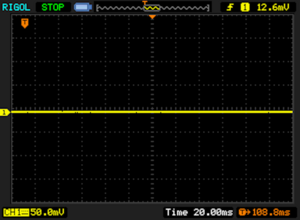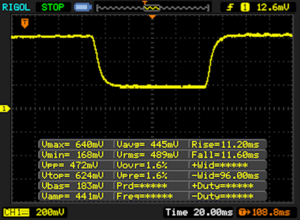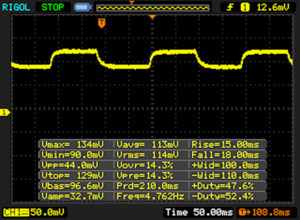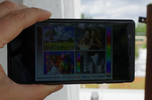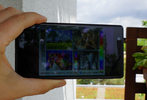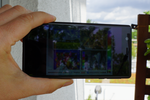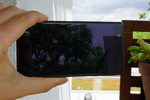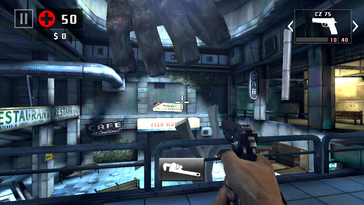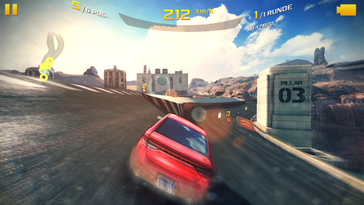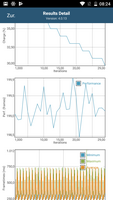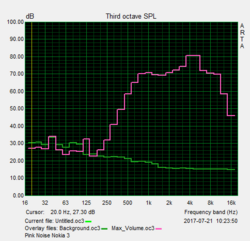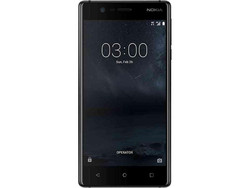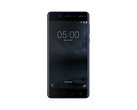Nokia 3 Smartphone Review
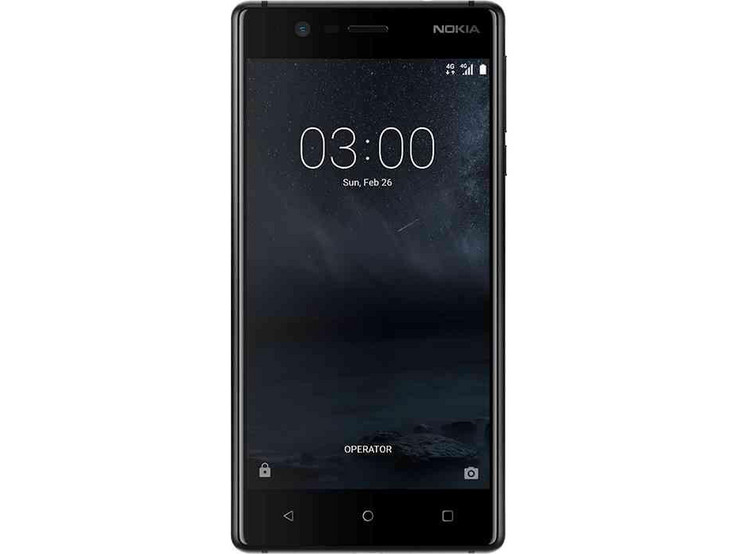
For the original German review, see here.
The cult manufacturer Nokia is reporting back after a rather notorious excursion into the Microsoft world and now wants to roll up the market for mobile phones with Android phones. A simple naming, a pure-as-possible operating system, regular updates, and some technical tricks that the manufacturer has come up with are to help. In addition to the mid-range Nokia 5 and Nokia 6 smartphones, the entry-level Nokia 3 is also on the market. We will begin our journey into the universe of the new old cult brand with this model. HMD Global is the name of the subsidiary that Nokia has established for developing, manufacturing and selling its new smartphones.
For 159 Euros (£130) the buyer gets a 5-inch HD panel, LTE, identical rear and front cameras, and a fairly up-to-date Android 7 in the Nokia 3. It has to compete with devices such as Sony's Xperia E5, LG's K8 2017, Gigaset's GS160 and Asus' ZenFone Go from its price range.
Case
Thanks to a metal bezel, the Nokia 3 adds a bit of high-quality flair to its price range. The rear is made simply of polycarbonate, but it makes a quality impression. All smartphones in this price range are quite similar in terms of dimensions and weight. However, the Nokia 3 is one of the slimmest with a height of just 8.68 millimeters (~0.34 in).
The casing's stability is satisfactory. Pressure on the front and rear are visible on the screen, but quite a lot of pressure has to be applied to the casing for this. The casing is easy to twist and produces slight cracking noises then. However, these lessen the quality impression only marginally. Other devices from this price range can be warped more easily and their noises are often considerably worse.
The non-removable rear and non-removable battery are a little unusual for this price range.
Connectivity
With 2 GB of RAM, the Nokia 3 working memory configuration is relatively generous. The storage device has the category standard of 16 GB. The Nokia 3 is available as both a single and dual SIM model. The storage can be expanded via a microSD card without losing one of the SIM slots in the dual-SIM model since the microSD card is inserted into its own slot. The microSD card can be formatted as either an internal or external storage. However, apps cannot be moved to it when it is formatted as an external storage.
NFC, USB OTG and the option of receiving FM radio are also part of the configuration. However, a USB-C port is not present, but rather a micro-USB port on the lower edge.
Software
Nokia has taken up the cause of delivering a pure-as-possible Android on its devices in order to ensure the possibility of faster updates. Android 7 thus comes to the user without modifications. The only additional apps are a support app and an app with diverse background themes. The security patches on our review sample were dated 5th April 2017, which is no longer up-to-date. Despite the assertion of regular updates, more recent software was not available at the time of testing.
Communication and GPS
The Nokia 3 supports LTE Cat.4 at speeds of up to 150 MBit/s (download) and 50 MBit/s (upload). Furthermore, nine LTE bands can be used, which is a minor sensation in this price range - normally, it is seven at most. The bands 1, 3, 7, and 20 are the most important ones in Central Europe, the band 38 that the Nokia 3 also supports is common in Russia, and thanks to band 40, the smartphone can also be used with LTE in China or India. Unfortunately, band 4 that is often used in the USA and Canada is not supported. Thus, the Nokia 3 is not a real global phone, but it is still cosmopolitan than its direct rivals. The reception in the well-developed German D2 network was satisfactory in an urban area. Usually we still had half the signal indoors.
Most comparison devices support 802.11 b/g/n, but only Sony's Xperia E5 can use the less frequented 5 GHz network.
| Networking | |
| iperf3 transmit AX12 | |
| Asus Zenfone Go ZB500KL (AVM FritzBox 6490) | |
| Sony Xperia E5 (Linksys EA8500, 5.0 GHz) | |
| Nokia 3 (Linksys EA8500, 5 GHz) | |
| LG K8 2017 (Linksys EA8500, 2.4 GHz) | |
| Gigaset GS160 (Linksys EA8500, 2.4 GHz) | |
| iperf3 receive AX12 | |
| Asus Zenfone Go ZB500KL (AVM FritzBox 6490) | |
| Nokia 3 (Linksys EA8500, 5 GHz) | |
| Sony Xperia E5 (Linksys EA8500, 5.0 GHz) | |
| LG K8 2017 (Linksys EA8500, 2.4 GHz) | |
| Gigaset GS160 (Linksys EA8500, 2.4 GHz) | |
The Nokia 3 does not receive a GPS signal indoors. However, the user is found quickly and with an accuracy of up to 7 meters (~23 ft) outdoors. This is a mediocre rate.
As usual, Garmin's Edge 500, a special navigation system for cyclists, is used for comparing the accuracy of the Nokia 3. The professional navigation system measured a roughly 200-meter (~219 yd) longer route over a total of approximately 6 kilometers (~3.7 mi). Thus, the difference is significant and is probably due to the fact that the Nokia 3 does not connect to satellites quite as frequently and thus draws a straight line between two distant points. The Nokia 3 also proves to be less accurate in the crossing area and lets us "fly" over garage roofs. Garmin's Edge 500 is considerably more accurate here. The Nokia 3 can be used when the user does not depend on precise navigation, but the user should then not rely too much on the measured routes.
Telephony and Call Quality
In line with Nokia's tenet that it wants to deliver a pure-as-possible Android, the phone app has not been modified. Google's standard app serves well and is intuitive to use.
We examine the call quality with a test call. We hear our contact clearly and the earpiece is also very loud when required. However, it then distorts and produces noise audibly. A good and relatively natural sound is achieved at a volume of around 70%. Unfortunately, our contact cannot say this about us. The microphone records only fairly muffled voices. The installed hands-free mode can also get quite loud and it is also relatively clear in reduced volumes. However, the microphone's recording quality is also rather mediocre here. Quiet voices are hardly transmitted and the sound is still muffled.
Cameras
Nokia has installed similar cameras into the front and rear: The technical specifications correlate with each other except for the LED flash on the rear. Both cameras have 8 megapixels and an aperture of f/2.0. By the way, all comparison devices are equipped with 13-megapixel cameras on the rear.
The primary camera shoots decent photos that lack some details when zoomed. Colors look relatively pale, but the sharpness is acceptable. The dynamics could be higher in dark areas, though. The software offers a panorama mode and a beauty mode as options. The latter smooths faces so that they look better proportioned and younger. Videos can be recorded in 720p at 30 frames per second. This is not unusual in this price range. However, some devices, such as LG's K8, can record videos in Full HD. The video quality of the Nokia 3 is acceptable, but the videos look slightly dark. The exposure adapts to the ambient light relatively quickly and usually properly.
The front camera presents a visible overexposure in bright areas, and it also has more problems with the image sharpness than the rear camera. In detail, outlines are frayed, colors are just as pale as they are on the photos from the rear camera. Although the front camera's 8-megapixel resolution is slightly higher than in many other smartphones, its quality is not really convincing.
The primary camera also has to pass the lab tests. It has to show its capabilities under controlled light conditions. The sharpness is acceptable in the image center, but it visibly blurs toward the edges. Edges often look frayed and text on a colored background is surrounded by artifacts. The color reproduction is usually a bit too dark.
Overall, the photo quality would be acceptable for this price range, but there are currently some devices with much better lenses, such as LG's K8 or Asus' ZenFone Go.
Accessories and Warranty
The shape and design of the box really look like that of former Nokia phones and prompts a certain nostalgic feeling. In addition to the smartphone, a charger, USB cable, SIM tool for opening the slots in the casing, and an in-ear headset are found in the box. Apart from additional headphones and a transparent case, there are no special accessories for the smartphone on Nokia's website.
Nokia offers a 24-month warranty on its smartphones. Please see our Guarantees, Return policies and Warranties FAQ for country-specific information.
Input Devices and Handling
Google's GBoard is used as the standard keyboard app. As always, the app offers a clearly arranged onscreen keyboard and many setting options. It is now even possible to use designs. Another keyboard from the wide selection in Google's Play Store can be downloaded if preferred.
Three buttons for navigating through Android are situated below the screen. They are not marked very clearly, nor are they illuminated. Thus, the user will have to know where to find what. The touch sensitive surfaces respond reliably to our inputs. The volume control and standby button are on the casing's right. They have a stylish design and also stand out with glossy edges. The buttons make a high-quality impression and have a distinct pressure point.
Some gestures can be used for controlling the smartphone: The phone mutes when picked up during an incoming call. It can also be turned around to reject a call.
Display
The screen's resolution of 1280x720 pixels and 5-inch size is pretty much category standard. However, the medium brightness of 469 cd/m² is above average. Since some areas of the screen shine brighter than others, the illumination of 84% is not very homogeneous - the brightness difference can even be seen with the naked eye on large, colored surfaces.
| |||||||||||||||||||||||||
Brightness Distribution: 84 %
Center on Battery: 481 cd/m²
Contrast: 2186:1 (Black: 0.22 cd/m²)
ΔE ColorChecker Calman: 8.1 | ∀{0.5-29.43 Ø4.77}
ΔE Greyscale Calman: 8.5 | ∀{0.09-98 Ø5}
95.3% sRGB (Calman 2D)
Gamma: 2.16
CCT: 9014 K
| Nokia 3 IPS, 1280x720, 5" | Asus Zenfone Go ZB500KL IPS, 1280x720, 5" | Gigaset GS160 IPS, 1280x720, 5" | LG K8 2017 IPS, 1280x720, 5" | Sony Xperia E5 IPS, 1280x720, 5" | |
|---|---|---|---|---|---|
| Screen | -6% | -24% | -24% | 9% | |
| Brightness middle (cd/m²) | 481 | 459 -5% | 489 2% | 358 -26% | 538 12% |
| Brightness (cd/m²) | 469 | 452 -4% | 479 2% | 351 -25% | 534 14% |
| Brightness Distribution (%) | 84 | 84 0% | 95 13% | 93 11% | 96 14% |
| Black Level * (cd/m²) | 0.22 | 0.42 -91% | 0.55 -150% | 0.49 -123% | 0.33 -50% |
| Contrast (:1) | 2186 | 1093 -50% | 889 -59% | 731 -67% | 1630 -25% |
| Colorchecker dE 2000 * | 8.1 | 4.5 44% | 8.3 -2% | 7.1 12% | 5.7 30% |
| Colorchecker dE 2000 max. * | 15.4 | 10.6 31% | 14.4 6% | 14.9 3% | 11 29% |
| Greyscale dE 2000 * | 8.5 | 6.5 24% | 8.7 -2% | 6.5 24% | 4.7 45% |
| Gamma | 2.16 102% | 2.22 99% | 2.08 106% | 2.12 104% | 2.51 88% |
| CCT | 9014 72% | 7791 83% | 9034 72% | 8166 80% | 7264 89% |
* ... smaller is better
Screen Flickering / PWM (Pulse-Width Modulation)
| Screen flickering / PWM not detected | |||
In comparison: 53 % of all tested devices do not use PWM to dim the display. If PWM was detected, an average of 8083 (minimum: 5 - maximum: 343500) Hz was measured. | |||
Very good: The black level of 0.22 cd/m² is very low, resulting in an excellent contrast ratio of 2186:1. None of the comparison devices can compete with this. So, is the screen picture perfect? Well, not quite as we determined in our measurements with the CalMAN software and spectrophotometer. We discovered a significant bluish tint in the grayscales, and the average color temperature of over 9000 Kelvin also points to this. The white balance cannot be set manually and an eye-sparing night mode is absent. However, apps can be downloaded from the Play Store and some are free. The bluish tint distorts the colors, but the mentioned apps and a bit of tweaking should make the image on the bright and high-contrast screen even better.
Display Response Times
| ↔ Response Time Black to White | ||
|---|---|---|
| 22.8 ms ... rise ↗ and fall ↘ combined | ↗ 11.2 ms rise | |
| ↘ 11.6 ms fall | ||
| The screen shows good response rates in our tests, but may be too slow for competitive gamers. In comparison, all tested devices range from 0.1 (minimum) to 240 (maximum) ms. » 50 % of all devices are better. This means that the measured response time is worse than the average of all tested devices (20.2 ms). | ||
| ↔ Response Time 50% Grey to 80% Grey | ||
| 33 ms ... rise ↗ and fall ↘ combined | ↗ 15 ms rise | |
| ↘ 18 ms fall | ||
| The screen shows slow response rates in our tests and will be unsatisfactory for gamers. In comparison, all tested devices range from 0.165 (minimum) to 636 (maximum) ms. » 44 % of all devices are better. This means that the measured response time is similar to the average of all tested devices (31.6 ms). | ||
A polarized screen is to reduce reflections on the Nokia 3 and facilitate outdoor use. This sounds exciting, but we only noticed little of the effect in real-world use: Just as much is seen compared with other smartphone panels. However, the maximum brightness is enough for outdoor use as long as the light does not shine directly on the screen.
The viewing angles are good. A slight color shift occurs only when tilting the screen up and down.
Performance
Mediatek's MT6737 SoC is also used in other affordable smartphones. It has four cores and clocks at a maximum of 1.25 GHz. The Nokia 3 can keep up well with its rivals, but LG's K8 and Sony's Xperia E5 are slightly faster. The power is usually enough for navigating smoothly in the system. Minor delays are only noticed directly after booting the system. The power is easily enough for simple apps even when two apps are running simultaneously on a divided screen.
An ARM Mali-T720 graphics solution with just one core and a clock speed of 600 MHz is installed. The Nokia 3 also achieves the performance level of its category with that. The Xperia E5 with an ARM Mali-T720 MP2, i.e. the model with two processing cores, takes the lead here.
| AnTuTu v6 - Total Score (sort by value) | |
| Nokia 3 | |
| Asus Zenfone Go ZB500KL | |
| Gigaset GS160 | |
| LG K8 2017 | |
| Sony Xperia E5 | |
| PCMark for Android | |
| Work performance score (sort by value) | |
| Nokia 3 | |
| Asus Zenfone Go ZB500KL | |
| Gigaset GS160 | |
| LG K8 2017 | |
| Sony Xperia E5 | |
| Work 2.0 performance score (sort by value) | |
| Nokia 3 | |
| Asus Zenfone Go ZB500KL | |
| LG K8 2017 | |
| Sony Xperia E5 | |
| Geekbench 4.4 | |
| 64 Bit Single-Core Score (sort by value) | |
| Nokia 3 | |
| LG K8 2017 | |
| Sony Xperia E5 | |
| 64 Bit Multi-Core Score (sort by value) | |
| Nokia 3 | |
| LG K8 2017 | |
| Sony Xperia E5 | |
| Compute RenderScript Score (sort by value) | |
| Nokia 3 | |
| LG K8 2017 | |
| GFXBench (DX / GLBenchmark) 2.7 | |
| T-Rex Onscreen (sort by value) | |
| Nokia 3 | |
| Asus Zenfone Go ZB500KL | |
| Gigaset GS160 | |
| LG K8 2017 | |
| Sony Xperia E5 | |
| 1920x1080 T-Rex Offscreen (sort by value) | |
| Nokia 3 | |
| Asus Zenfone Go ZB500KL | |
| Gigaset GS160 | |
| LG K8 2017 | |
| Sony Xperia E5 | |
| GFXBench 3.0 | |
| on screen Manhattan Onscreen OGL (sort by value) | |
| Nokia 3 | |
| Asus Zenfone Go ZB500KL | |
| Gigaset GS160 | |
| LG K8 2017 | |
| Sony Xperia E5 | |
| 1920x1080 1080p Manhattan Offscreen (sort by value) | |
| Nokia 3 | |
| Asus Zenfone Go ZB500KL | |
| Gigaset GS160 | |
| LG K8 2017 | |
| Sony Xperia E5 | |
| GFXBench 3.1 | |
| on screen Manhattan ES 3.1 Onscreen (sort by value) | |
| Nokia 3 | |
| Asus Zenfone Go ZB500KL | |
| Gigaset GS160 | |
| LG K8 2017 | |
| Sony Xperia E5 | |
| 1920x1080 Manhattan ES 3.1 Offscreen (sort by value) | |
| Nokia 3 | |
| Asus Zenfone Go ZB500KL | |
| Gigaset GS160 | |
| LG K8 2017 | |
| Sony Xperia E5 | |
The Nokia 3 is situated at the rear of the test field in fast Internet browsing. Here, it is often necessary to wait for images to load, and it also takes a while until more sophisticated HTML5 animations are loaded. We checked whether more intricate animations overload the smartphone with the game “letsplay.ouigo.com”. This unfortunately is the case. Jerky graphics speak for themselves. At least the inputs are quite fast so that the game remains just playable. The Nokia 3 should be equipped for everyday Internet use in most cases, only that the user will sometimes have to wait a bit longer.
| JetStream 1.1 - Total Score | |
| Sony Xperia E5 | |
| LG K8 2017 | |
| Gigaset GS160 | |
| Asus Zenfone Go ZB500KL | |
| Nokia 3 | |
| Octane V2 - Total Score | |
| LG K8 2017 | |
| Sony Xperia E5 | |
| Gigaset GS160 | |
| Nokia 3 | |
| Asus Zenfone Go ZB500KL | |
| Mozilla Kraken 1.1 - Total | |
| Nokia 3 | |
| Asus Zenfone Go ZB500KL | |
| Gigaset GS160 | |
| Sony Xperia E5 | |
| LG K8 2017 | |
| WebXPRT 2015 - Overall | |
| Nokia 3 | |
| Gigaset GS160 | |
* ... smaller is better
The Nokia 3 accesses the microSD card with astonishing speed. Our reference card is a Toshiba Exceria Pro M401. It even achieves the fast write rates and hardly lags behind LG's K8 and the Xperia E5 in read.
On the other hand, accessing the internal storage is much slower. Our review sample usually only managed one of the last places in the comparison field. Thus, the sometimes relatively long loading times in apps and games are not surprising.
| Nokia 3 | Asus Zenfone Go ZB500KL | Gigaset GS160 | LG K8 2017 | Sony Xperia E5 | |
|---|---|---|---|---|---|
| AndroBench 3-5 | -18% | -7% | 78% | 43% | |
| Sequential Read 256KB (MB/s) | 181 | 143 -21% | 200.5 11% | 270.8 50% | 209.7 16% |
| Sequential Write 256KB (MB/s) | 34 | 42.4 25% | 46.6 37% | 84.6 149% | 83.1 144% |
| Random Read 4KB (MB/s) | 17.7 | 19.7 11% | 18.5 5% | 41.6 135% | 26.04 47% |
| Random Write 4KB (MB/s) | 5.5 | 6.9 25% | 6.8 24% | 12.5 127% | 9.84 79% |
| Sequential Read 256KB SDCard (MB/s) | 64.3 | 17.7 -72% | 30.71 -52% | 78.6 22% | 65 1% |
| Sequential Write 256KB SDCard (MB/s) | 62.9 | 14.4 -77% | 19.19 -69% | 52.2 -17% | 45.56 -28% |
Games
The Nokia 3 will not satisfy users who want to play graphically intricate games on their smartphone. The fast racing game “Asphalt 8” does not achieve smooth 30 frames per second, even in the lowest details. Although it is possible to play the games in real-life, occasional stutters cannot be avoided. More basic games, such as “Angry Birds”, run without issues. Navigating via touchscreen and position sensor also functions well.
| Asphalt 8: Airborne | |||
| Settings | Value | ||
| high | 13 fps | ||
| very low | 28 fps | ||
| Dead Trigger 2 | |||
| Settings | Value | ||
| high | 29 fps | ||
Emissions
Temperature
The performance of the Nokia 3 corresponds to its price and is thus not very high. On the other hand, the casing almost does not heat up at all during load. A maximum of 34.2 °C (~94 °F) is still below human body temperature and is therefore not perceived as warm. Furthermore, the differences compared to idle are very marginal. It is always possible to work with the Nokia 3, even during high system load and to put it into a pocket afterward.
The system performance remains stable even after a prolonged load as we determined with the GFXBench battery test.
(+) The maximum temperature on the upper side is 32.5 °C / 91 F, compared to the average of 35.2 °C / 95 F, ranging from 21.9 to 247 °C for the class Smartphone.
(+) The bottom heats up to a maximum of 34.2 °C / 94 F, compared to the average of 34 °C / 93 F
(+) In idle usage, the average temperature for the upper side is 30 °C / 86 F, compared to the device average of 32.9 °C / 91 F.
Speaker
The Nokia 3 can get loud when it has to: The sound comes out of the little speaker on the lower edge with up to 86.5 dB(A). Unfortunately, the trebles are very prominent and make the ears ring at maximum volume. Higher-quality smartphones produce considerably more balanced and pleasant sounds. Basses are actually inaudible. The low mids are also understated. This creates a treble-heavy sound that is enough for occasional music sampling that is not really fun.
The 3.5-mm jack on the upper edge is tight so that plugs are difficult to insert at first. On the other hand, they do not slide out easily. The sound is clear and convincing. Transmission via Bluetooth also functioned well and without issues.
Nokia 3 audio analysis
(+) | speakers can play relatively loud (86.5 dB)
Bass 100 - 315 Hz
(-) | nearly no bass - on average 39.4% lower than median
(±) | linearity of bass is average (11.6% delta to prev. frequency)
Mids 400 - 2000 Hz
(+) | balanced mids - only 4.8% away from median
(±) | linearity of mids is average (8% delta to prev. frequency)
Highs 2 - 16 kHz
(±) | higher highs - on average 5% higher than median
(+) | highs are linear (5.8% delta to prev. frequency)
Overall 100 - 16.000 Hz
(±) | linearity of overall sound is average (29% difference to median)
Compared to same class
» 76% of all tested devices in this class were better, 3% similar, 21% worse
» The best had a delta of 11%, average was 35%, worst was 134%
Compared to all devices tested
» 87% of all tested devices were better, 2% similar, 11% worse
» The best had a delta of 4%, average was 24%, worst was 134%
Asus Zenfone Go ZB500KL audio analysis
(±) | speaker loudness is average but good (78.4 dB)
Bass 100 - 315 Hz
(-) | nearly no bass - on average 28.6% lower than median
(±) | linearity of bass is average (10.2% delta to prev. frequency)
Mids 400 - 2000 Hz
(+) | balanced mids - only 4.8% away from median
(+) | mids are linear (6.1% delta to prev. frequency)
Highs 2 - 16 kHz
(+) | balanced highs - only 3.1% away from median
(+) | highs are linear (4.5% delta to prev. frequency)
Overall 100 - 16.000 Hz
(±) | linearity of overall sound is average (25.8% difference to median)
Compared to same class
» 64% of all tested devices in this class were better, 6% similar, 29% worse
» The best had a delta of 11%, average was 35%, worst was 134%
Compared to all devices tested
» 79% of all tested devices were better, 4% similar, 17% worse
» The best had a delta of 4%, average was 24%, worst was 134%
Frequency diagram comparison (checkboxes above can be turned on/off!)
Energy Management
Power Consumption
The Nokia 3 is competitive in terms of power consumption. Although its shutdown power consumption is perhaps slightly high, the smartphone is one of the devices in the comparison field that consumes the least power as soon as it is turned on. The maximum consumption of 4.02 watts is even the lowest, and the maximum idle consumption of 1.39 watts is also very low.
| Off / Standby | |
| Idle | |
| Load |
|
Key:
min: | |
| Nokia 3 2630 mAh | Asus Zenfone Go ZB500KL 2600 mAh | Gigaset GS160 2500 mAh | LG K8 2017 2500 mAh | Sony Xperia E5 2300 mAh | |
|---|---|---|---|---|---|
| Power Consumption | -23% | -19% | -7% | -49% | |
| Idle Minimum * (Watt) | 0.67 | 0.92 -37% | 0.56 16% | 0.65 3% | 1.03 -54% |
| Idle Average * (Watt) | 1.35 | 1.76 -30% | 1.7 -26% | 1.6 -19% | 2.06 -53% |
| Idle Maximum * (Watt) | 1.39 | 1.85 -33% | 1.75 -26% | 1.62 -17% | 2.12 -53% |
| Load Average * (Watt) | 3.1 | 3.47 -12% | 4.17 -35% | 2.97 4% | 5.01 -62% |
| Load Maximum * (Watt) | 4.02 | 4.22 -5% | 5.07 -26% | 4.34 -8% | 5.04 -25% |
* ... smaller is better
Battery Runtime
Although the Nokia 3 can boast with a low power consumption and the biggest battery in the comparison field (2630 mAh/10Wh), it achieves only a mediocre battery life in the Wi-Fi test. However, a slightly longer battery runtime than from the competitors should be possible, even when the smartphone is often under heavy load. A day of usage should be easily achieved in routine use. Two days might even be possible when the user is a bit more careful with the power. However, recharging takes quite a long time with the included charger: 2:30 hours have to be planned to fully recharge the device.
| Nokia 3 2630 mAh | Asus Zenfone Go ZB500KL 2600 mAh | Gigaset GS160 2500 mAh | LG K8 2017 2500 mAh | Sony Xperia E5 2300 mAh | |
|---|---|---|---|---|---|
| Battery runtime | -1% | 4% | 4% | -24% | |
| Reader / Idle (h) | 21 | 20.4 -3% | 22.1 5% | ||
| H.264 (h) | 10.5 | 10.3 -2% | 11.7 11% | ||
| WiFi v1.3 (h) | 9.2 | 9.5 3% | 10.3 12% | 9.9 8% | 7 -24% |
| Load (h) | 4.7 | 4.6 -2% | 4.1 -13% | 4.7 0% |
Pros
Cons
Verdict
The Nokia 3 is an almost solid entry-level smartphone, which would probably be enough for a successful market start in this category. However, the device also surprises us with really good rates in some places, such as screen brightness, contrast, power consumption or the many available LTE bands.
This makes it stand out in the category, but there are also some shortcomings that have to be considered. Considerably better cameras exist in this price range and, in terms of performance, a stronger device also exists on the market - the Xperia E5. Furthermore the speaker's sound and GPS accuracy are not stellar, but this cannot be expected in this price range.
Bright and high-contrast screen, low power consumption, stylish casing - the Nokia 3 has a good position in the entry-level category. However, not much value should be placed on a good camera since the smartphone can only offer this conditionally.
The stylish casing and overall decent test outcomes in many areas give the Nokia 3 a good market start in the entry-level sector. Now we are all anticipating the tests of its larger sibling since Nokia has to come up with more for convincing buyers in the mid-range.
Nokia 3
- 07/28/2017 v6 (old)
Florian Wimmer


